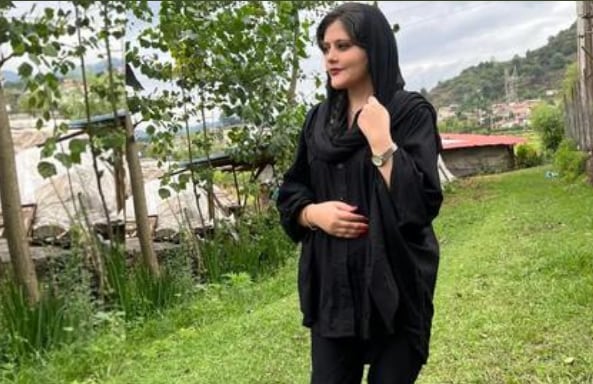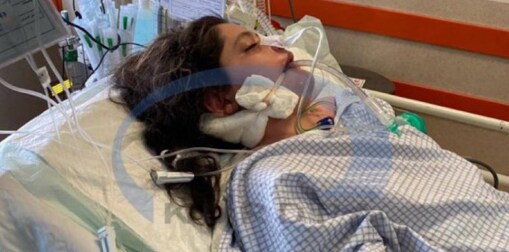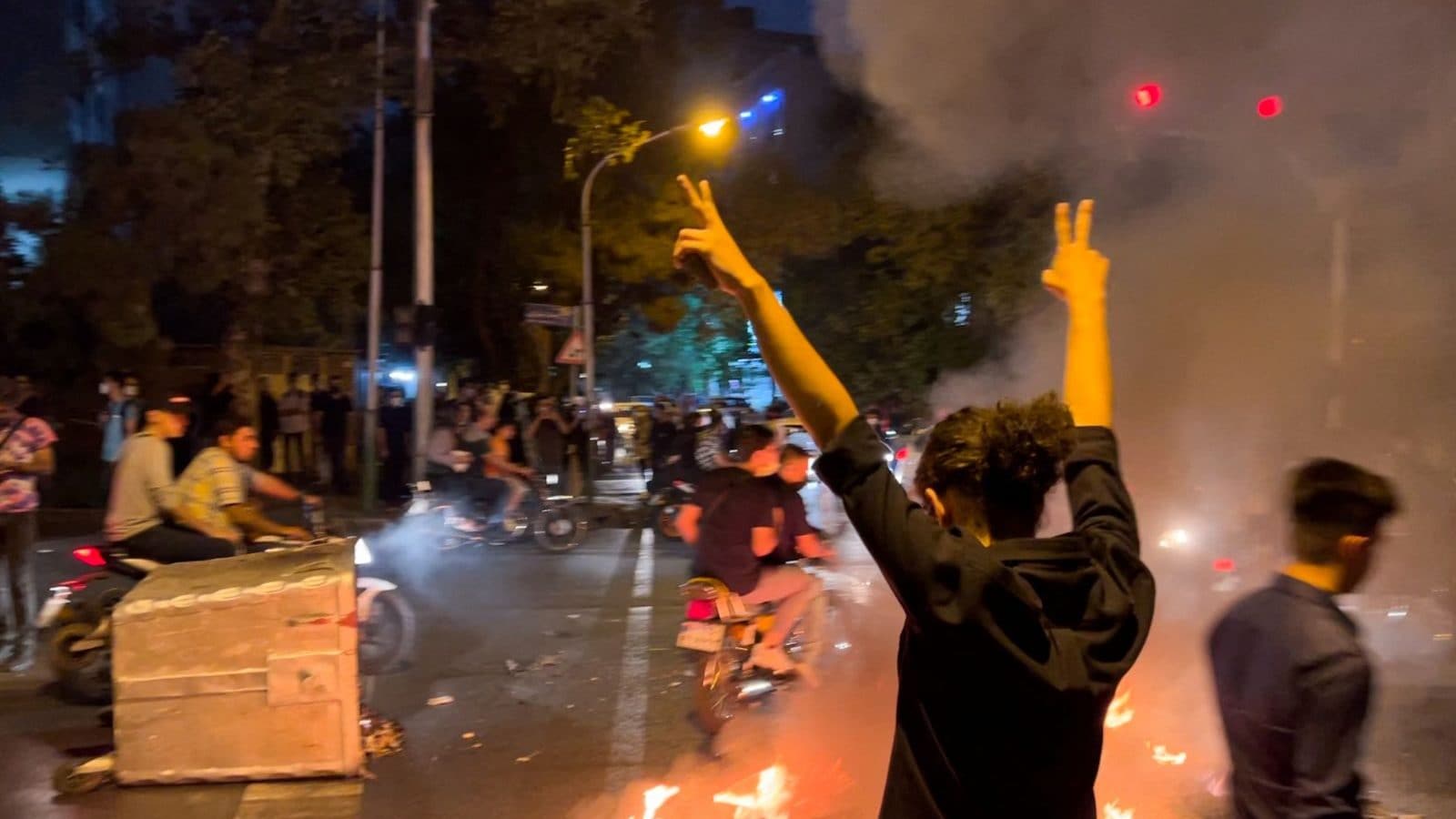Iranian Women Roar Against Hijab Rules After Mahsa Amina’s Death: News18 Explains Row & Protests
As public anger rises in Iran, three deaths were reported during the protests over the death of a young woman who had been arrested by the “morality police,” who enforce a strict dress code. Authorities announced on Friday that Mahsa Amini, 22, died in a hospital after three days in a coma after being arrested by Tehran’s morality police during a visit to the capital on September 13.
Other than the hijab rule, the police provided no explanation for why Amini was detained, said a report by the New York Times. Her mother told Iranian news outlets that her daughter was following the rules and wearing a long, loose robe. She claimed Amini was detained as she exited the subway with her brother, despite his pleas that they were visitors to the city.
But the death caused furor in the country amid demonstrations in Tehran, including at several universities, and in Mashhad, the country’s second largest city. Protesters marched down Hijab Street, or “headscarf street,” in central Tehran, denouncing the morality police, according to the ISNA news agency.
This woman removed her hijab and threw it in the air in front of security forces and dared them to arrest her. Men cheered for her.
This is Sanandaj & people took to the streets to protest against the murdering of #MahsaAmini who was beaten to death by hijab police in Iran. pic.twitter.com/QwAsomPmFl— Masih Alinejad ????️ (@AlinejadMasih) September 18, 2022
These Iranian women took of their hijab to protest against the murdering of #MahsaAmini by hijab police. The woman who took the video says:
We will win against gender apartheid regime because now our anger is bigger than our fear. #مهسا_امینی pic.twitter.com/VIFiIr0mCv— Masih Alinejad ????️ (@AlinejadMasih) September 19, 2022
Amid the protests and the allegations of Amini being beaten up by police, resulting in her death, News18 takes a deeper dive into the case and the longstanding hijab controversy in Iran:
How Did Mahsin Amini Really Die?

State television on Friday broadcast a short surveillance video that showed a woman identified as Amini collapsing in the police station after an argument with a policewoman. Amjad Amini, the victim’s father, told Fars that he did “not accept what (the police) showed him”, arguing that “the film has been cut”.
According to a statement issued by Iran’s security forces, Amini suffered a heart attack at the detention centre while receiving educational training on hijab rules. But her family disputed this claim, claiming she was perfectly healthy prior to her arrest.
The victim’s father also criticised the “slow response” of the emergency services, adding: “I believe Mahsa was transferred to the hospital late.” Interior Minister Ahmad Vahidi said Saturday he had received reports that the emergency services had arrived “immediately” at the scene. “Mahsa apparently had previous physical problems and we have reports that she had undergone brain surgery at the age of five,” Vahidi said.
Her father, however, “insists that his daughter had no history of illness and was in perfect health”, Fars reported.
A photo and video of Amini went viral on social media, showing her unconscious on a hospital bed with tubes in her mouth and nose, blood oozing from her ear, and bruises around her eyes.

Several Iranian doctors said on Twitter that while they didn’t have access to her medical file, bleeding from her ear suggested she had a concussion from head injuries.
Iran’s Rule on Clothes
In the Islamic republic, morality police units enforce a dress code that requires women to wear headscarves in public. Tight trousers, ripped jeans, clothes that expose the knees, and brightly coloured outfits are also prohibited.
The History
According to a report by Brookings, Veiling in Muslim societies has always been heavily dependent on geographic, socioeconomic, and historical context, and the issue has long been politicised in contemporary Iran.
In an effort to modernise his country and instil a sense of national identity, the first Pahlavi shah issued a decree prohibiting veiling in 1936; he also mandated European-style hats for men, the report states. The edict was repealed a few years later, when the shah was forced into exile and his young son took over as ruler. Mohammad Reza Pahlavi expanded on his father’s secular, pro-Western stance, and as anti-government activism gained traction in the 1970s, many women consciously adopted headscarves or all-encompassing chadors as tangible rejections of the monarchy.
Even at the start of the post-revolutionary era, the report explains, the state’s efforts to impose and enforce hijab met with fierce opposition. In the weeks following the monarchy’s demise, hints of a crackdown on women’s dress sparked some of the first post-revolutionary protests, drawing thousands of women to the streets in March 1979 to warn that the new leadership’s imposition of headscarves threatened their rights. “There is an absence of freedom in the dawn of freedom,” their slogan went.
Despite this and other public protests, compulsory hijab became an essential feature of the post-revolutionary system, first by force and then by law. Today, any violation carries a small fine and a two-month prison sentence, the report states.
Regular Outcry
Over the years, such incidents in Iran have been reported time and again, with some documented. According to a report by the BBC in May 2018, that in the capital Tehran alone, more than 35 female protesters have been arrested since December 2017. Women who take part in anti-hijab protests face up to ten years in prison, according to the police.
A woman was grabbed and slapped by a female morality police officer in Tehran in April 2018 because of her loose headscarf, the BBC report stated. The incident, while not uncommon, was filmed and shared on Masih Alinejad’s Instagram. It was viewed by over 3 million people and received over 30,000 comments.
The incident sparked a worldwide outcry. Masoumeh Ebtekar, Iran’s Vice-President for Women’s Affairs, also condemned the violence. “How can this treatment be justified?” she asked on Twitter.
Other Controversies around Hijab
India
India too saw a controversy around the Hijab last year when in December last year, six students were barred from entering a government school in the Udupi district because they were wearing hijabs. As the controversy grew, students from a Mangaluru district college made similar claims.
As schools imposed restrictions, more students in Karnataka spoke up. Muslim students claimed that their fundamental rights to education and religion were being violated. The incident sparked counter-protests led by fringe Hindu groups, and soon a group of students and others were locked in a hostile standoff with those protesting the hijab ban.
In March this year, the Karnataka High Court dismissed a slew of petitions on Tuesday challenging the government order prohibiting hijabs (headscarves) from being worn in state schools and colleges. The wearing of hijabs is not a “essential religious practise” in Islam, the three-judge panel led by Chief Justice Ritu Raj Awasthi said, adding that students cannot object to “reasonable restrictions” in the form of uniforms. The court upheld the state’s ‘incompetent and manifestly arbitrary’ order from February 5, ruling that it did not violate constitutional provisions.
The apex court yesterday heard arguments on a batch of petitions challenging the Karnataka High Court verdict refusing to lift the ban on hijab in educational institutions of the state that have prescribed uniforms.
Asserting that the hijab is the “identity” of Muslims, senior advocate Dushyant Dave told the Supreme Court that various acts of ommission and commission like Karnataka’s headscarf controversy showed a “pattern to marginalise the minority community”.
Europe
In Europe, the hijab and burka controversies revolve around the various headdresses worn by Muslim women. In several countries, wearing a hijab (an Arabic noun meaning “to cover”) has sparked political debate and calls for a partial or total ban in some or all circumstances. Some countries already have laws prohibiting the wearing of masks in public, which can be applied to face veils.
Other countries are considering similar legislation or have less stringent prohibitions. Some only apply to face-covering clothing, such as the burqa, boushiya, or niqab; others, such as the khimar, a type of headscarf, apply to any clothing with an Islamic religious symbolism.
European Countries That Have Banned Hijab
The following European countries have banned the burqa completely or partially as of July 2021, according to a BBC report: Austria, France, Belgium, Denmark, Bulgaria, the Netherlands (in public schools, hospitals, and on public transportation), Germany (partial bans in some states), Italy (in some localities), Spain (in some localities of Catalonia), Russia (in the Stavropol Krai), Luxembourg, Switzerland, Norway (in nurseries, public schools, and universities), and Kosovo (in public schools), Bosnia and Herzegovina (in public schools), and Bosnia and Herzegovina (in public schools) (in courts and other legal institutions).
With inputs from agencies
This story was originally published on 21 September, 2022.
Read all the Latest Explainers News and Breaking News here
For all the latest world News Click Here

